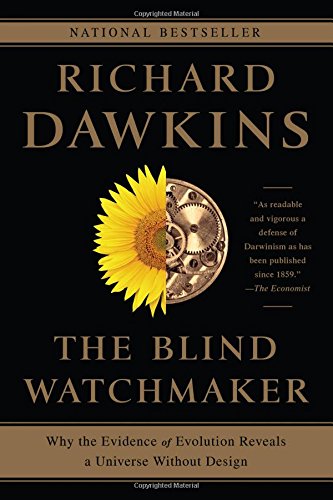Dawkins’ Weasel Program vs the Information Life Acquires En Route
To demonstrate what is wrong with fully naturalist assumptions like those of Richard Dawkins’ Weasel program, I developed Weasel Libs, modeled on Mad LibsIn his famous Weasel program zoologist and philosopher Richard Dawkins shows that the simple combination of random mutation and natural selection (Darwinian evolution) can produce the English sentence, “Methinks it is like a weasel”, in a short time period. The point of his program is to demonstrate that evolution can generate the complex, pre-specified DNA sequences we find in biology before the heat death of the universe.
His argument sounds persuasive because both English sentences and DNA sequences are made up of symbols. Both can be randomly modified anywhere, and by cumulative selection, they can plausibly adapt to the environment in reasonably short order. Writers in English can learn to pen best-selling novels through trial and error and audience feedback. Evolution can cause one organism to out-reproduce another through random variation and survival of the fittest, which is why we always seem to need new strategies against old crop pests.
But there is a hidden premise in Dawkins’ argument. It is that an organism’s genome possesses all the information needed to create the organism. We now know that this is not correct assumption as a result of recent research into epigenetics.
Our genomes are, of course, inherited from our parents. But they can be altered during our lifetimes by stress factors that cause genes to switch on or off. Then the genome is passed on in an altered state. In some cases, the altered state can affect behavior as well as physiology:
Because these influences were not inherited, they are called epi, that is, “outside” genetics, thus… epigenetics.
Dawkins’ Weasel program ignores the possibility of these epigenetic influences on the information that makes up life by assuming that all the information is contained within the phrase he chose and that likewise all an organism’s information is contained within the genome. His example is a false analogy that will lead us astray when thinking about evolution and a variety of other topics and we must discard of it.
Is there a better analogy? I propose Mad Libs.
Mad Libs is a fun group activity where an editor takes a section of text, describing some routine activity and blanks out certain words. The editor then requests new words from her group to fill in the blanks. The catch is the group does not see the text and has no idea what it is about. So participants recommend words that have absolutely nothing to do with the topic. Much hilarity ensues.
Let’s try a Mad Libs version of Dawkins’ argument. In honor of Dawkins, I’ll call these Weasel Libs. He starts with the following excerpt from Shakespeare’s Hamlet, and so shall we.
Hamlet: Do you see yonder cloud that’s almost in shape of a camel?
Polonius By the mass, and ’tis like a camel, indeed.
Hamlet: Methinks it is like a weasel.
Polonius It is backed like a weasel.
Hamlet: Or like a whale?
Polonius Very like a whale.
First, let’s blank some of the words:
Hamlet: Do you _ yonder that’s almost in shape of a __?
Polonius: By the , and ’tis like a __, indeed.
Hamlet: _ it is like a _.
Polonius: It is _ like a __.
Hamlet: Or like a _?
Polonius: Very like a __.
Now I will replace the blanks with words I queried randomly from Webster’s dictionary.
Hamlet: Do you hydrocholecystis yonder unilinear that’s almost in
shape of a lamaist?
Polonius: By the macaronism, and’tis like a overabsorb, indeed.
Hamlet: shastra it is like a subbasal.
Polonius: It is conormal like a nonfrauder.
Hamlet: Or like a improper?
Polonius: Very like a Fauna.
Incoherent. Sort of funny. Definitely more compelling than GPT-3. Maybe Microsoft will throw a billion of OpenAI’s money my way. But, I digress.
We can run the program a couple of times and get a couple of variants. We could eventually get variants that make sense (though the numbers are ugly). We could even evolve the dialogue à la Dawkins’ Weasel program until the original Shakespearean quotation reemerges.
However, there is one thing that will never occur. You may have caught it…
Exactly! We will never get a dialogue between Elon Musk and the Twitter board.
The reason is that the overall structure of the Weasellib is set in stone. The mechanisms of random variation and natural selection can only come up with variants within those constraints. There is no way that filling in the blanks created in the passage will change the interlocutors from Hamlet and Polonius to Elon Musk and the Twitterati, simply because the names themselves are not blanked out.
What does all this have to do with evolution and epigenetic information?

Since the advent of epigenetics, we can no longer assume that the incremental genetic changes assumed by traditional evolutionary theory are the only sources of information for change in an organism. Epigenetic markers can be turned on and off but their variation does not resembles the incremental steps in a closed environment that Darwin envisioned and that Dawkins envisions today. Rather, they are giant bounds through the structure space of an organism.
As Dawkins eloquently argues in The Blind Watchmaker: Why the Evidence of Evolution Reveals a Universe Without Design (1986), giant bounds are completely off limits for evolution. The odds of ending up in an existential dead end climb exponentially the greater the leap.
The only way Darwinian evolution can work is through incremental steps, as in Dawkins’ Weasel program and incremental steps can only happen at the genome level where editing a nucleotide or two can modify proteins slightly without being disruptive.
Epigenetics research means that we now know that Dawkins’ Darwinian model of evolution is constrained to the Weasel Libs model, not the more free-ranging one that he argues for. Which, of course, raises the even bigger question: If a complex information structure cannot evolve, where does it come from?
I fear, gentle reader, that at this point I can no longer lead you. You must open your own wings and seek out an answer. I await with eager anticipation what you will discover.
You may also wish to read: Can computers –- and people — learn to think from the bottom up? That’s the big promise made in a recent article at Aeon. A simple word ladder puzzle shows why Michael Levin and Rafael Yuste’s ambitious project cannot succeed.
